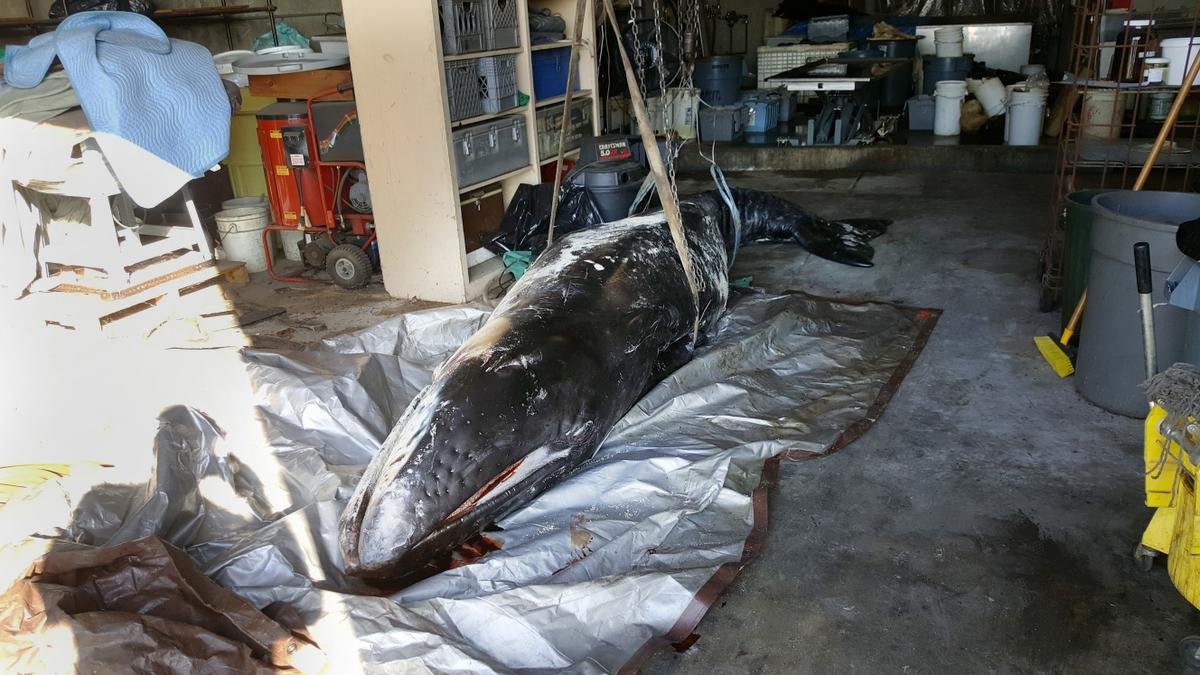
"Unfortunately, nothing stands out as a cause of death," said Jim Dines, who did the examination and oversees the museum's marine mammal program.
Dines determined that the whale was a female, was a full-term neonate and likely was a week old. She measured 15.5 feet and weighed 1,800 pounds. There were no signs of trauma or disease.
The whale's soft tissues and skeleton will be kept by the museum for research.
"We have the second-largest research collection of cetaceans in North America," Dines said. "Smithsonian has the largest."
Officials from the Pacific Marine Mammal Center were notified about the dead whale Monday by Laguna Beach police after a beach walker discovered her lying along the waterline on the sand close to Bird Rock.
"I went there directly," said Michele Hunter, the center's director of animal care. "The beachgoer who reported it didn't know if it was alive or dead."
Hunter instantly recognized the animal was dead. She contacted Justin Viezbicke, stranding coordinator at the National Oceanic and Atmospheric Administration, and sent him a photo of the animal. She and her crew measured and took skin samples from the young whale.
Viezbicke confirmed it was a gray whale.
By 11 a.m. Monday, with help from Laguna Beach lifeguards and the city's Public Works crew, the body of the dead whale was taken off the beach and loaded into a PMMC truck. It was taken to the marine mammal center, where it was secured for the drive to the Natural History Museum, where the necropsy was performed Tuesday.
Since mid-November, whale watch captains have seen gray whales starting their annual migration from their rich feeding grounds in the Bering Sea to their breeding and birthing grounds in the lagoons off Baja California. Marine biologists say crowds of the leviathans may be visible along the Southern California coast in coming months after a record number of sightings last season.
Dines said that during this time of year, every two or three years baby whales have washed up dead off Orange and Los Angeles county beaches.
"It's not super common but it does happen from time to time," he said. "In some cases, it's a stillborn."
Laguna Beach police animal services Officer John Thompson stayed with the whale until it was determined whether someone wanted the carcass, said Laguna Beach Marine Safety Capt. Tom Trager.
Typically, dead whales are wrapped and towed out to sea, Trager said.
"We've had whales on the beach before, but this is the smallest one I've ever seen here," Trager said. "It's kind of sad, but I'm glad it's going for a good cause."



Reader Comments
to our Newsletter